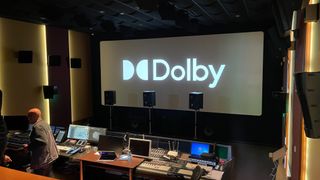Buying home cinema audio hardware is tricky at the best of times. Jump over to our best surround sound packages guide and that’s clear, as even at the top end of the market there are massive differences in performance, based on our experience testing them.
There are also more technical terms and standards to content with than can easily be counted. Two of the most common you’ll see are Dolby and DTS. But what do these terms mean and how do they impact a film or show’s audio?
This is a particularly complex question to answer at the moment as both Dolby and DTS offer multiple different audio technologies within their respective libraries. As an added layer of complexity, many of these offer completely different experiences and require specific hardware to work.
Here to help clear up the confusion and let you make a more informed decision about the benefits of the two companies’ competing home cinema solutions, we’ve created this handy guide.
In it, we’ll not only give a detailed explanation of the technical differences, we’ll also detail our experience using and comparing the two in the real world and our dedicated listening rooms.
Starting with the basics…
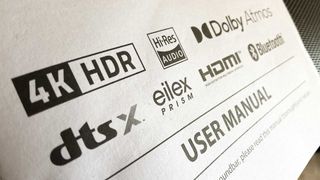
Both DTS and Dolby Digital are audio compression technologies, allowing moviemakers to record surround sound that can be reproduced in cinemas as well as homes. Both deliver spine-tingling multi-channel sound, so what's the difference? And which is better?
The devil is in the detail. Or, more accurately, the way that the two technologies encode audio.
DTS is encoded at a higher bit-rate and therefore is considered by some experts to be better quality. Others argue that Dolby Digital's technology is more advanced and produces better sound quality at a lower bit-rate.
Confused? The good news is that both are widely supported, and chances are you won't have to play favourites.
In their most basic form, both DTS and Dolby Digital support 5.1-channel audio (i.e. a typical home cinema system with five speakers and one subwoofer). And more advanced versions of the formats support 7.1 channels, HD surround sound and overhead speakers, in the form of DTS:X and Dolby Atmos.
You'll find DTS and Dolby Digital supported by Blu-ray players, home cinema systems, games consoles, computers, set-top boxes and even smartphones.
Want to learn more? Then keep reading.
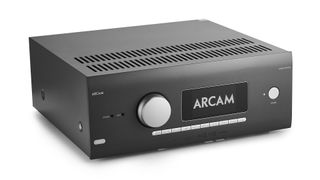
What is Dolby Digital?
Dolby Digital is a multi-channel audio codec from Dolby Labs. It delivers a cinematic surround sound experience and is commonly referred to as the 'industry standard' (primarily because Dolby Labs has been around longer than DTS).
The first film to use Dolby Digital was Batman Returns in 1992. Since then, Dolby has released a slew of increasingly advanced codecs, including Dolby Digital Plus, which supports HD surround sound and up to 7.1 speaker channels.
Want the best? Dolby TrueHD is a lossless format that promises to be identical to the movie studio's master recording. Then there's the object-based audio system you'll no doubt have heard of – Dolby Atmos.
What is DTS?
DTS (originally Digital Theater Systems) was founded in 1993 to compete with Dolby Labs for surround-sound supremacy. The company got its big break when Steven Spielberg chose DTS for his dino-romp, Jurassic Park.
In 1996, DTS began cropping up in consumer hardware. The company might not be as well known as its main rival, but many purists believe that DTS offers better sound quality because it encodes audio at higher bit-rates.
Like Dolby Digital, DTS has since released a plethora of more advanced surround sound formats including DTS-HD High Resolution, which supports up to 7.1 speaker channels. DTS has also brought out a lossless format, DTS-HD Master Audio. There is also DTS:X, which competes with Dolby's Atmos.
What is the difference between DTS and Dolby Digital?
Dolby Digital and DTS can both deliver fantastic surround-sound experiences – but there are some key differences in the way that they achieve that end result.
The major differences are the compression levels and bit-rates. Dolby Digital compresses 5.1 digital audio down to a bit-rate of 640 kbits/s (kilobits per second) for Blu-ray discs. For DVD discs, it supports a slightly lower bit-rate: up to 448 kbits/s.
DTS, on the other hand, is less compressed and supports higher bit-rates of up to 1.5Mb/s (megabits per second). Some DVD discs also have 1.5Mb/s bit-rate, though most have a soundtrack encoded at 754kbps.
The compression gap widens when you step up to the competing HD formats. Dolby Digital Plus supports up to 1.7Mbps, while DTS-HD High Resolution supports up to 6Mb/s. In theory, less compression during encoding equals more detailed audio that delivers a soundtrack closer to what was originally intended.
Case closed, then? Not so fast. Dolby argues that its codecs are more efficient than DTS codecs and thus can sound every bit as good or better, even at a lower bit-rate.
Ultimately, you can expect a fine home cinema experience from both, and often your choice of soundtrack will come down to whichever is supported by your source material.
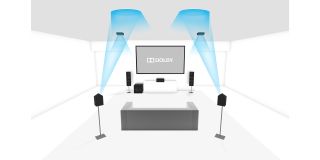
DTS:X vs Dolby Atmos
These top-of-the-line, cutting-edge home cinema audio technologies from Dolby and DTS are a step up from traditional surround sound. They recreate object-based effects, such as a plane flying overhead or bullets zinging around the room, thanks to multiple audio signals aimed at set-ups with a greater number of speakers than the standard 5.1.
Again, both should create an immersive experience, but there are some crucial differences between the two.
Dolby Atmos uses speakers placed in the ceiling to create a 'bubble' of sound. Not keen to cut holes in your ceiling? There's a range of simpler options, such as Dolby Atmos soundbars with vertical drivers that bounce the sound off the ceiling to similar effect or – better yet – up-firing modules that can sit on top of your traditional speakers.
Many premium TVs now support Dolby Atmos, including all of LG's OLEDs from the past few years and a number of Sony models.
You can find Dolby Atmos products from an increasing number of hardware manufacturers, as well as across Blu-ray discs and streaming services, including Amazon Prime Video, Netflix and Disney+. TV broadcasters such as Sky and BT are increasingly supporting Atmos, too.
DTS:X is a bit more flexible. It works with standard surround-sound set-ups and doesn't require extra overhead speakers. You can also manually adjust sound objects, meaning you can crank up the volume of voices on a soundtrack making it easier to hear dialogue over loud effects.
Around 90 per cent of the home AV industry supports DTS:X, with many manufacturers either releasing firmware updates for existing receivers or launching new models. The downside? It is less common and you won't find it on any streaming services – even on Disney+ where Marvel movies are available in ‘IMAX Enhanced’, a presentation format from the same company as DTS (Xperi) and which typically uses DTS audio.
Dolby Atmos Flexconnect and DTS Play-Fi
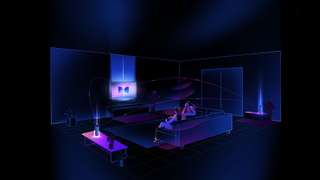
Now that we’ve explained the difference between Atmos and DTS:X we have to add one big caveat – the situation is going to get a little more complex in the very near future thanks to the arrival of new Dolby Atmos Flexconnect and DTS Play-Fi Immersive Home Theater technologies.
You can get a detailed description of the two technologies and what they aim to do in our dedicated Dolby Flexconnect vs DTS Play-Fi guide. But the short version is that they aim to let you create completely wireless surround-sound packages.
Flexconnect was unveiled last year and aims to offer a full fat, wireless Atmos experience using your TV’s speakers as the central channel and bespoke-made satellites that, according to Dolby, can be placed anywhere you like. This in theory removes the need to carefully position your speakers in prescribed but potentially awkward places in order to get the best results. We haven’t seen any Flexconnect hardware yet, so can’t comment on performance, but Dolby is expected to unveil the first package which is being made in partnership with TCL at the IFA tradeshow in Berlin in September.
Play-Fi is an even weirder, in some ways competing, technology that lets you create surround-sound packages with up to 12 audio channels in system configurations up to 7.2.4. The rub is that it uses custom DTS wireless tech to let you mix and match the speakers used, as any Play-Fi-ready hardware will be able to work together.
We haven’t reviewed the Play-Fi or any compatible speakers and there is a definite danger the added freedom could let people create some horribly matched set-ups. But DTS has done some limited demos of it working, like the attached video, which make it at the very least look interesting.
Which is better: DTS or Dolby Digital?
Based on the specs alone, DTS beats its rival with higher bit-rates that promise a more realistic movie experience. That said, other factors such as signal-to-noise ratio and speaker calibration mean that plenty of audiophiles would rate Dolby above DTS.
With standards constantly evolving, the best way to upgrade your movie night is to ensure you have good-quality components, set up properly and fed the highest possible source material. That way, whether it's DTS:X or Dolby Atmos, you'll be treated to thrilling home cinema entertainment.
MORE:
The 22 best Dolby Atmos movie scenes to test your speakers
The best AV receivers, best speaker packages and best soundbars you can buy
